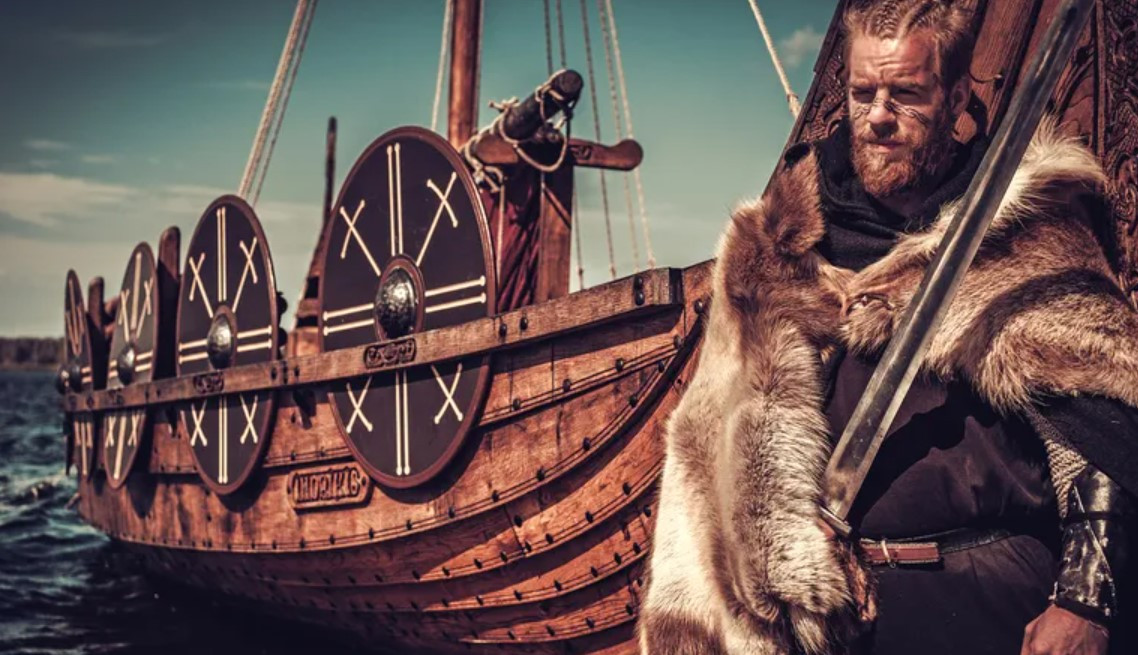Viking Blog
Unveiling the Viking Legacy: Brave Warriors, Pioneers, and Cultural
The Vikings were a tribe that left a significant mark on human history. They are known as brave warriors, pirates, explorers, and talented traders with legendary expeditions. Originating from ancient Scandinavian North Europe, the image of the Vikings is closely associated with maritime expeditions, indomitable fighting spirit, and fierce raids. However, the Vikings also hold many secrets, creating multi-dimensional stories in history and being a fascinating subject of exploration.
1. Who were the Vikings? Where did they come from?
The Vikings were a tribe from the Scandinavian Peninsula, including Norway, Denmark, Iceland, Sweden, and Finland, from the 8th to the 11th centuries. While often mentioned as warriors or pirates, they were also explorers, geographers, farmers, and skilled traders. They undertook sea voyages on longships, exploring and settling across Europe and the Atlantic. The Vikings also left many cultural achievements, such as developing their own alphabet (the runic script) and Norse mythology (gods like Thor and Odin).
2. The Viking Age – A Glorious Era Lasting Over 300 Years
The Viking Age spanned from around 753 to 1066. During this period, the Vikings conducted numerous expeditions on longships, known as Drakkar, across the North Sea and the Atlantic Ocean. They landed in cities and fishing villages on the coasts of Europe, Southwest Asia, the North Atlantic region, and Northeast America for trade, plunder, and territorial conquest. Notable expeditions include:
- Danish Vikings ravaging and plundering islands in England, Ireland, and Francia.
- Norwegian Vikings expanding to Scotland, the Orkney Islands, the Faroe Islands, Iceland, and Greenland.
- Swedish Vikings heading east, reaching Russia and even the Byzantine Empire.
In addition to trade, conquest, and plunder, the Vikings also engaged in mercenary work, kidnapping slaves, and played a role in the development of feudalism in Europe. Viking society did not form a unified nation but consisted of small communities in independent villages. The formation of nations in Northern Europe only occurred during the Medieval period.
3. 18 Amazing Facts About the Vikings
The Vikings left a mark on human history through their talent, determination, and distinctive Scandinavian civilization. This warlike tribe is also a subject and inspiration for many works of art and film. However, many aspects of the Vikings have been misrepresented, causing misunderstandings. Here are some astounding facts about this ancient tribe:
- Vikings did not wear horned helmets: This image only appears in films to romanticize and enhance their fierce look. In reality, Vikings wore protective helmets without horns.
- Days of the week were named after Norse gods: Naming days after Norse gods was an essential part of Viking daily life, e.g., Wednesday for Odin/Woden, Tuesday for Tyr, Friday for Frigg, and Thursday for Thor.
- Vikings were not exceptionally tall: They were usually slender and about 1.7 meters tall.
- Vikings believed in the afterlife: They believed the afterlife depended on how they lived their current life.
- Vikings favored blonde hair: They used strong lye soap to bleach their hair to achieve blonde hair.
- Vikings discovered America before Columbus: Leif Eriksson led a group of Vikings who landed in America over 500 years before Columbus.
- Vikings did not tattoo themselves: There is no physical evidence of Viking tattoos.
- Unique judicial system: The Vikings established a judicial system called Althing to resolve disputes and handle crimes.
- Buried the dead in ships: Great Viking warriors needed a ship to reach Valhalla after death, so they were buried in ships with necessary items like food, weapons, treasure, and slaves.
- Vikings enjoyed skiing: Skiing was a winter transportation method and a popular recreational activity.
- Traded in slaves: Slaves were valuable commodities in Viking trade.
- Used onion soup to detect severe injuries: After battles, they ate onion soup and sniffed their wounds; the smell of onions indicated serious abdominal injuries.
- Bluetooth named after Viking king Harald Bluetooth: He united Viking tribes and created stable infrastructure.
- Weddings lasted a week: Viking weddings were luxurious cultural events.
- Vikings valued cleanliness: They cared for personal hygiene, used grooming tools, kept their beards neat, and preferred bright clothing.
- Braided hair: Vikings braided their hair to keep it long and cut it short at the back.
- Dragon-head decorated ships: Archaeological evidence of this remains uncertain.
- Not the only inhabitants of the Scandinavian Peninsula: The Sami, a semi-nomadic tribe, also lived there and had positive trade relations with the Vikings.
4. Do the Vikings still exist?
Do Vikings still exist? Today, Vikings still exist, but only a small number of their descendants remain. Scientists in England have collected DNA samples from people in the Contentin Peninsula, France, to trace Viking descendants and understand the process of Scandinavian colonialism and genetic influence. Over 100 volunteers provided DNA samples, but the research sparked racial discrimination debates in France, so the results have not been published.
A famous descendant of the Vikings is Jim Lyngvild. He built a castle to live in and worship Norse gods, often wearing ancient costumes and inviting tourists to visit Odense village, which recreates Viking-era life.


